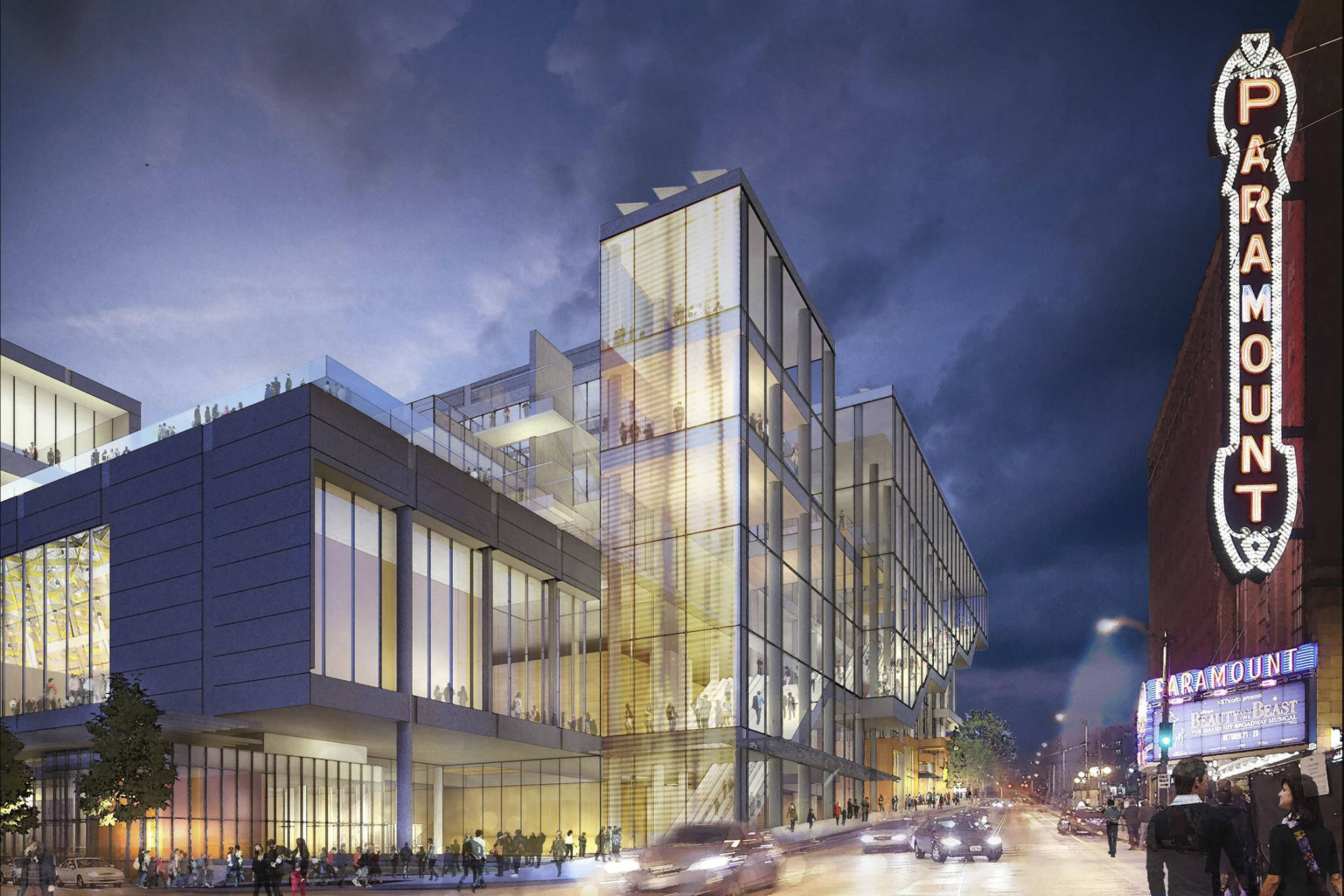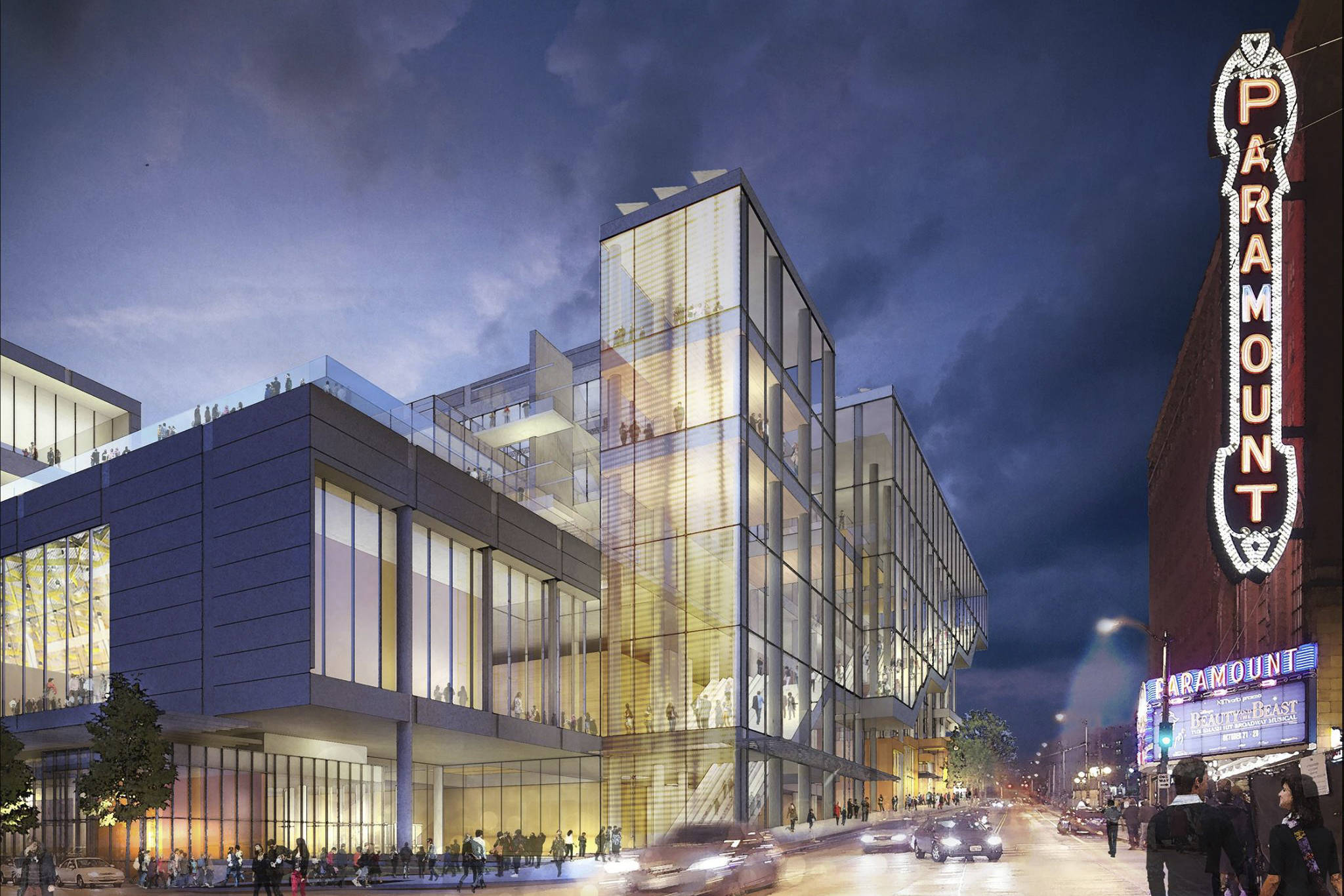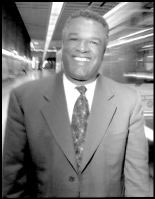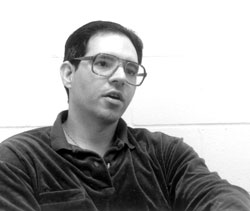ONCE UPON A TIME—back in the late 1960s, in fact—Seattle’s leaders aimed the wrecking ball at Pioneer Square and the Pike Place Market. A civic group called Allied Arts led the rescue mission. A few years later, Allied Arts spearheaded the effort to create the Seattle Arts Commission and the country’s first “One Percent for Art” program, which requires that a percentage of all government construction project budgets be devoted to arts purchases.
Founded in 1952, Allied Arts is a venerable (some might say “hoary”) Seattle institution made up of architects, lawyers, and artists dedicated to “the greater good—whether in urban design, historic preservation, or arts advocacy. So it comes as something of a shock to see a barefoot, scruffy, overcaffeinated 30-year-old claiming to be Allied Arts’ new president and ranting about “the Croc,” sustainable cities, overturning the poster ban, “ugly and elitist” skybridges, and Web conferences.
After the initial shock, though, it makes sense. New president Alex Steffen’s range of interests—from green politics, techno-utopianism, and new urbanist architecture (all espoused in his defunct magazine Steelhead, Handbook for the Next Northwest) to his passion for rock ‘n’ roll and his entertaining mix of City Hall gossip and penetrating analysis—have established him as an activist/thinker out of time: one who would be better suited to the 19th century, with its salons and comprehensive theories of society.
“The idea of a civic organization is anachronistic,” Steffen declared during a recent conversation. “It’s always a challenge to keep people active in civic life. Most people aren’t involved and don’t care.” He sees the challenge before him as making Allied Arts “relevant” again. “This old warhorse is working its way back,” he says defiantly.
Over the past year, Allied Arts has been involved in several civic dust-ups. Most of them were on familiar turf—the struggle over the expansion of the Convention Center and the process for choosing an architect for the new downtown library, for example. But its role in the debate over whether Seattle should host the Olympic Games signaled that Steffen is intent on redefining Allied’s role.
When the Bid Committee, a private nonprofit devoted to bringing the 2012 Olympics to Seattle, quietly began circulating a City Council resolution in support of its efforts, there was a noticeable absence of public debate. “There was no public hearing even scheduled,” Steffen points out. Allied Arts responded by sponsoring a forum on the bid at the Two Bells Tavern, and a tidal wave of citizen opposition subsequently swept over the City Council and drowned the Olympic bid with it. Steffen now says that Allied Arts deserves credit for jump-starting the debate.
Others disagree. “I don’t think Allied Arts played a prominent role,” says City Council member Peter Steinbrueck, an early Olympics opponent who believes that opposition was a spontaneous outpouring. “I hardly even remember that forum.”
Steinbrueck also wonders why Allied Arts is venturing into territory like the Olympics to begin with. “What Allied Arts has done best in the past is focus on issues which are not purely political, but the arts and good urban design,” he says. Allied Arts has been able to “bring in professionals who critique proposals in advance of political processes. It is well respected for that historical role. When it gets into purely political issues, then it becomes fuzzier.”
STEINBRUECK HASN’T SEEN anything yet. Steffen is also pushing a Constitution for the Arts that takes Allied Arts into unimagined new territory. “It’s been an interesting process to talk about nightlife issues with our members, many of whom tend to go to bed by 10,” he says. Nightlife “is where people go to be involved with culture, whether it’s live music or paintings on the wall. Our city government has been pretty hostile—the poster ban, the teen dance ordinance, the cabaret ordinance. . . .”
Steffen has convinced Allied Arts to support broad changes in the teen dance ordinance, which regulates all-ages music events, and the poster ban. Allied Arts is also proposing that certain neighborhoods be designated as “arts districts where nightlife is encouraged”—think Belltown and Pioneer Square. In arts districts, “noise ordinances would be relaxed,” and there would be “fast tracking of liquor permits. If you move into [Belltown] and buy a condo, don’t expect the Croc to shut down by 11pm.”
As for Allied Arts’ franchise, Steffen hopes to advance a new version of the “One Percent for Arts” law, with the intention of closing loopholes and funding more public art.
Lurking in the background of Steffen’s iconoclasm is an interesting tradition. For all of Steinbrueck’s insistence that the organization should stay out of politics, Allied Arts has been a productive proving ground for future Seattle politicians. Mayor Paul Schell and City Council members Steinbrueck and Margaret Pageler all played significant roles there before moving into public office. So Steffen’s work at the organization may prove interesting not only because it reinvents the role of Allied Arts in the Seattle public policy arena, but also because it furnishes a sneak preview of the kind of politicians and activists who will be guiding the city’s future.







